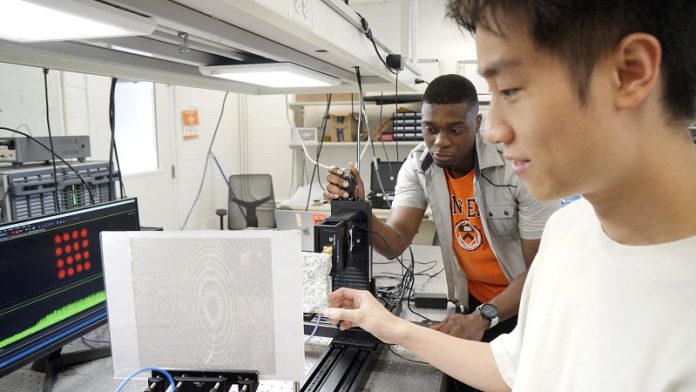
Princeton engineers develop a machine-learning system that bends ultrahigh-frequency signals around barriers, paving the way for faster and more reliable wireless networks.
Imagine walking behind a bookshelf and suddenly losing your internet connection.
That’s the challenge scientists face as they move into sub-terahertz frequencies—ultrafast signals that can carry nearly ten times more data than today’s Wi-Fi but are easily blocked by walls, furniture, or even people.
Now, Princeton engineers have found a way to make these signals bend around obstacles like a curveball, keeping connections alive and strong even in crowded spaces.
Imagine trying to use virtual reality or stream massive amounts of data, only to have your connection suddenly disappear because you walked behind a bookshelf.
That’s the frustrating problem scientists face as they push wireless communication into ultra-high frequencies.
These signals, especially those in the “sub-terahertz” range, can carry data at speeds nearly ten times faster than today’s Wi-Fi. But there’s a catch: the higher the frequency, the easier it is for the signal to get blocked by walls, furniture, or even people walking around.
A team at Princeton Engineering believes they’ve found a clever way to fix this problem. Instead of letting signals slam into obstacles and die out, they’re teaching them to bend—like a curveball in baseball—so they can dodge around barriers.
Their new system, powered by machine learning, adapts in real time to changing environments, keeping the signal alive and strong.
Sub-terahertz frequencies sit at the upper end of the microwave spectrum. They’re exciting because they can handle much more data than current wireless systems.
That makes them essential for future technologies such as fully immersive VR, self-driving cars, or any system that relies on lightning-fast, reliable wireless communication.
The problem is that these signals don’t spread out like ordinary radio waves. Instead, they travel in narrow, focused beams. That’s great for efficiency but terrible for reliability—because the beams are easily blocked.
Engineers have tried bouncing the beams off reflectors, but that’s not always practical in everyday spaces.
The Princeton team, led by electrical and computer engineering professor Yasaman Ghasempour, turned to a concept first proposed in 1979 called Airy beams.
These special beams can be shaped so they don’t travel in a straight line. Instead, they bend smoothly, almost as if they’re steering themselves around obstacles. Think of them as wireless curveballs.
The challenge isn’t just making these beams—it’s knowing exactly how to bend them in cluttered, unpredictable environments like offices, homes, or busy streets. A slight change in angle or curvature can mean the difference between a crystal-clear connection and total dropout.
To solve this, the researchers used artificial intelligence. They built a neural network, a computer system modeled on the human brain, to learn which curved beams work best in different situations. The idea is similar to how basketball players learn to sink shots. They don’t calculate every throw; they rely on experience to know how much force and angle to use.
But training a neural network takes lots of data. Rather than wasting time sending out millions of test signals, the team built a powerful simulator. This allowed the AI to practice in virtual environments filled with different obstacles before being tested in the real world.
Once trained, the system can adapt incredibly quickly. If a new obstacle appears—say, a person walks into the signal’s path—the transmitter can instantly adjust the curvature of the beam, steering it around the block. The researchers achieved this using a specially designed “metasurface,” a material that can shape waves with precision.
The Princeton team tested their design in the lab and showed that the system can keep connections alive even in complicated, shifting environments. While more work remains, they see this as a breakthrough toward practical sub-terahertz wireless networks.
“With further advances, transmitters could one day navigate the most complex spaces,” Ghasempour said. “That means ultra-fast, reliable wireless for everything from immersive virtual reality to self-driving cars.”
In other words, the wireless curveball may soon be as important as the straight shot—keeping our future devices connected, no matter what obstacles stand in the way.



